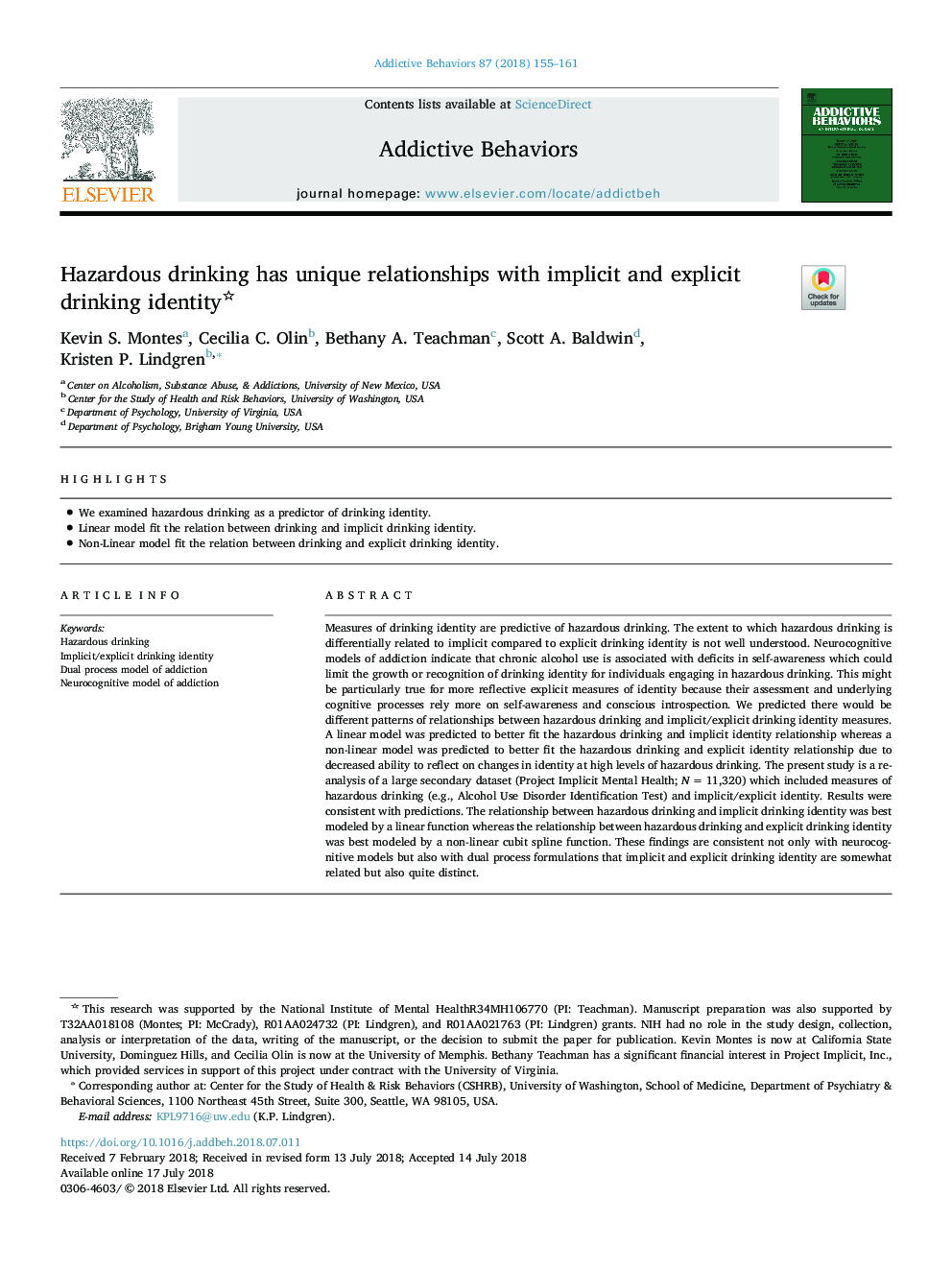| Article ID | Journal | Published Year | Pages | File Type |
|---|---|---|---|---|
| 7258711 | Addictive Behaviors | 2018 | 7 Pages |
Abstract
Measures of drinking identity are predictive of hazardous drinking. The extent to which hazardous drinking is differentially related to implicit compared to explicit drinking identity is not well understood. Neurocognitive models of addiction indicate that chronic alcohol use is associated with deficits in self-awareness which could limit the growth or recognition of drinking identity for individuals engaging in hazardous drinking. This might be particularly true for more reflective explicit measures of identity because their assessment and underlying cognitive processes rely more on self-awareness and conscious introspection. We predicted there would be different patterns of relationships between hazardous drinking and implicit/explicit drinking identity measures. A linear model was predicted to better fit the hazardous drinking and implicit identity relationship whereas a non-linear model was predicted to better fit the hazardous drinking and explicit identity relationship due to decreased ability to reflect on changes in identity at high levels of hazardous drinking. The present study is a re-analysis of a large secondary dataset (Project Implicit Mental Health; Nâ¯=â¯11,320) which included measures of hazardous drinking (e.g., Alcohol Use Disorder Identification Test) and implicit/explicit identity. Results were consistent with predictions. The relationship between hazardous drinking and implicit drinking identity was best modeled by a linear function whereas the relationship between hazardous drinking and explicit drinking identity was best modeled by a non-linear cubit spline function. These findings are consistent not only with neurocognitive models but also with dual process formulations that implicit and explicit drinking identity are somewhat related but also quite distinct.
Keywords
Related Topics
Life Sciences
Neuroscience
Behavioral Neuroscience
Authors
Kevin S. Montes, Cecilia C. Olin, Bethany A. Teachman, Scott A. Baldwin, Kristen P. Lindgren,
